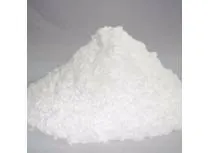
Dec . 07, 2024 03:59 Back to list
cephalosporins pseudomonas manufacturer
Understanding Cephalosporins and Their Role Against Pseudomonas Aeruginosa
Cephalosporins are a class of β-lactam antibiotics that are widely used in the treatment of various bacterial infections. They are derived from the fungus Acremonium, originally known as Cephalosporium, and have been developed through multiple generations to enhance their efficacy against a broader spectrum of bacteria. One of the most challenging pathogens that clinicians face today is Pseudomonas aeruginosa, a Gram-negative bacterium known for its resistance to multiple antibiotics. In this article, we delve into the significance of cephalosporins in combatting infections caused by Pseudomonas aeruginosa, with a focus on their manufacturers, efficacy, and future developments.
The Challenge of Pseudomonas Aeruginosa
Pseudomonas aeruginosa is notorious for causing infections in immunocompromised patients, particularly in hospital settings. It is responsible for a range of conditions, including pneumonia, urinary tract infections, and bloodstream infections. The rise of antibiotic-resistant strains has made treatment increasingly complicated, as many conventional antibiotics lose their effectiveness against this resilient pathogen. This is where cephalosporins play a crucial role.
Cephalosporins Generations and Efficacy
Cephalosporins are categorized into several generations, each with specific characteristics and efficacy against various bacteria. The later generations – particularly third, fourth, and fifth – have shown increased activity against Pseudomonas aeruginosa.
1. Third Generation Drugs like cefoperazone and ceftazidime are included in this generation. Ceftazidime is particularly notable for its effectiveness against Pseudomonas, making it a common choice in treating infections caused by this pathogen.
2. Fourth Generation Cefepime is a prime example of a fourth-generation cephalosporin. It has a broader spectrum of activity and is effective against both Gram-positive and Gram-negative bacteria, including Pseudomonas aeruginosa. Its stability against certain β-lactamases enhances its utility in clinical settings.
3. Fifth Generation The fifth-generation cephalosporins, such as ceftaroline, primarily target resistant Gram-positive organisms like MRSA; however, their effectiveness against Pseudomonas is limited compared to earlier generations.
Manufacturers of Cephalosporins
Several pharmaceutical companies are instrumental in producing cephalosporins for clinical use
. Major manufacturers includecephalosporins pseudomonas manufacturer

- Roche Known for producing high-quality cephalosporins, Roche has been a significant player in the development of antibiotics since the early days of modern medicine.
- Merck & Co. This company has introduced various cephalosporins, including novel formulations that aid in treating infections that involve resistant bacteria.
- Pfizer Pfizer has invested in the development of cephalosporins, contributing to both efficacy enhancements and new delivery mechanisms.
- AstraZeneca With a focus on innovative treatments, AstraZeneca has developed cephalosporins that target difficult-to-treat infections, including those caused by Pseudomonas.
These manufacturers continually engage in research to modify their cephalosporins, enhancing their effectiveness while minimizing side effects.
Future Developments and Considerations
As antibiotic resistance continues to rise, the demand for new and more effective treatments remains high. Research into the modification of existing cephalosporins and the development of new derivatives is crucial. One promising avenue being explored is the combination of cephalosporins with other antibiotic agents to circumvent resistance mechanisms employed by Pseudomonas aeruginosa.
Moreover, the role of pharmacogenomics in predicting patient responses to cephalosporin therapy is gaining attention. Personalized medicine approaches may lead to more effective treatment strategies against resistant strains.
Conclusion
Cephalosporins remain a vital tool in the fight against infections caused by Pseudomonas aeruginosa. Despite the challenges posed by antibiotic resistance, ongoing research and development by leading manufacturers are critical for enhancing the efficacy of these antibiotics. As the medical community continues to address the evolving landscape of bacterial infections, cephalosporins will inevitably play an essential role in treatment regimens and patient outcomes. Understanding their application and potential will be crucial for healthcare professionals as they navigate the complexities of antibiotic therapy in an increasingly resistant world.
-
Premium China Bacillus Subtilis Supplier & Factory Solutions
NewsJul.30,2025
-
Premium Avermectin Supplier in China | Custom Solutions Available
NewsJul.29,2025
-
China Bacillus Subtilis Supplier - Custom Factory Solutions
NewsJul.29,2025
-
China Salivation: Leading Custom Salivation Supplier & Factory Solutions
NewsJul.29,2025
-
Leading Lincomycin Hydrochloride Manufacturer & Supplier with High Purity
NewsJul.29,2025
-
Bio-Enzyme Yogurt Growth Promoter Factory - Top Quality Manufacturer & Supplier
NewsJul.28,2025




